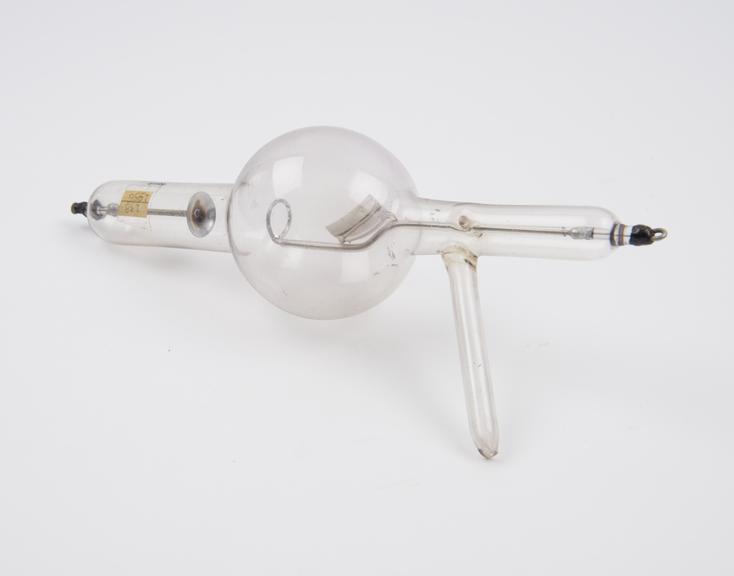





The "Penetrator" X-ray tube, invented by Cossor, by Cossor and Watson, 1896-1900
X-rays are produced as electricity passes through the two metal electrodes in this glass tube. X-rays were discovered in 1895 by German physician Wilhelm Röntgen. This object is one of the earliest examples of X-ray tubes. It is known as the ‘Penetrator’. It was made by English company Cossor and Watson Limited.
In the resulting images, dense areas of bone show up as white on photographic plates. Soft tissue allows the X-ray to pass through undeterred. X-rays quickly proved useful as diagnostic and therapeutic tools in medicine. They were especially useful on the battlefield. X-rays were being used by physicians within six months of Röntgen’s announcement. They used them to locate bullets in wounded soldiers without surgery. However, the technology was not taken up on a wider scale for some years.
Details
- Category:
- Radiomedicine
- Collection:
- Sir Henry Wellcome's Museum Collection
- Object Number:
- A600217
- Measurements:
-
overall: 68 x 235 x 110 mm
weight: 0.43kg
weight: 0.94799lbs
- type:
- x-ray tube
- credit:
- Wellcome Trust (Purchased from Stevens)




